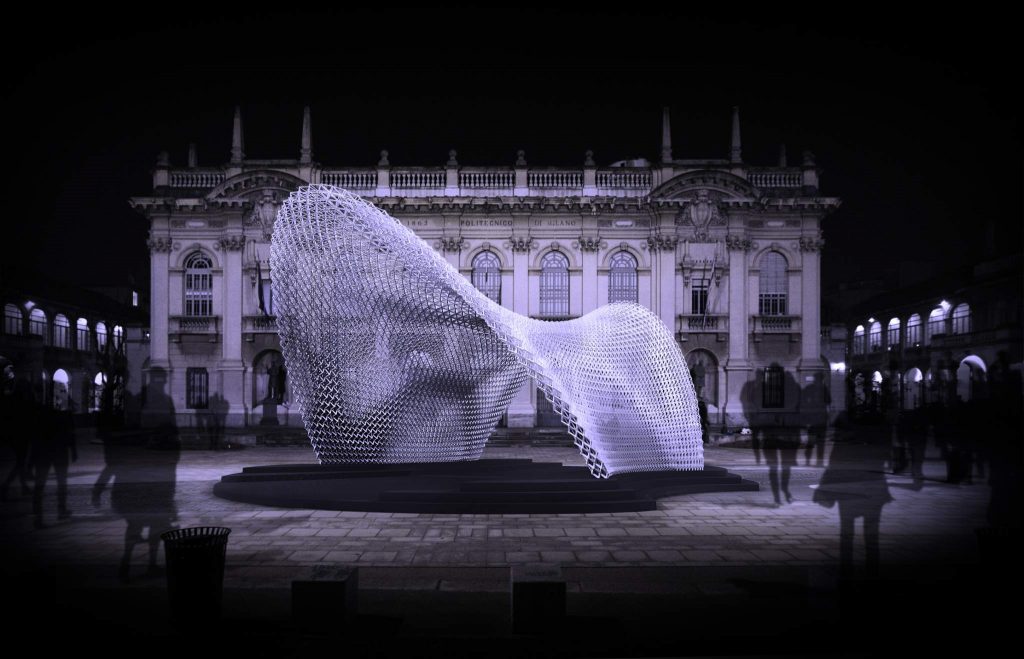A study of the structure of human bone structure has made the case for a class of high-wear resistant, lightweight, 3D printed materials.
A team from Cornell University, Purdue University, and Case Western Reserve University (CWRU) have studied the spongy, trabeculae structure of vertical and horizontal struts forming the center of our bones. Challenging a long-held belief, the team has found that the seemingly insignificant horizontal rods of the bone are crucial to their ability to last a lifetime.
“Bone is a building,” explains Pablo Zavattieri, a professor in Purdue’s Lyles School of Civil Engineering. “It has these columns that carry most of the load and beams connecting the columns.
“We can learn from these materials to create more robust 3D printed materials for buildings and other structures.”
Creating potential for the treatment of osteoporosis as well as industrial engineering applications, the research was recently published in the Proceedings of the National Academy of Sciences (PNAS).

The biomimicry of bone
The structure of human bone, particular its trabecular structure, has long served as an inspiration for the design of new products and structures.
In 2017, as part of the MADE Expo in Milan, the Architecture Computation Technology Lab (ACTLAB) of Politecnico di Milano exercised its CAD expertise in the construction of large-scale arch inspired by trabeculae tissue.
Global medical device company LimaCorporate has also patented its Trabecular Titanium technology for the production of implants that closely mimic this spongy structure.

Plate-like in shape, the vertical struts of trabeculae gives bones their innate stiffness and strength. The horizontal, rod-like struts meanwhile have now been deemed important for bone durability. With 3D printing, designers have a tool to accurately mimic the structure like never before.
The secret to long-lasting architectures
In Cornell, Purdue and CWRU’s study, researchers examined how bone degenerates with age. Explaining the effects of aging Professor Christopher Hernandez in Cornell’s mechanical, aerospace and biomedical engineering division said, “When people age, they lose these horizontal struts first, increasing the likelihood that the bone will break from multiple cyclic loads.”
To better understand how bone structure responds to cyclic loads, the team ran a microstructural simulation. In this experiment Adwait Trikanad, Purdue PhD student and co-author of the study, explains, “we were able to see that the strains would get concentrated in these horizontal struts, and by increasing the thickness of these horizontal struts, we were able to mitigate some of the observed strains.”
After digitally testing the load-bearing capabilities of the structures, the team then 3D printed structures based on the designs and performed further investigative compression tests.
When making the horizontal struts 30% thicker, the material was shown last up to 100 times longer than the initial, thinner structure.
The lightness of the structures would provide great value to engineering sectors, as regularly observed in numerous case studies across automotive and aerospace sectors. Professor Zavattieri adds, “When something is lightweight, we can use less of it. To create a stronger material without making it heavier would mean 3D printed structures could be built in place and then transported.
“These insights on human bone could be an enabler for bringing more architected materials into the construction industry.”
“Bone-inspired microarchitectures achieve enhanced fatigue life,” is co-authored by , , , , , , , and
Subscribe to the free 3D Printing Industry newsletter for the latest research developments. You can also stay connected by following us on Twitter and liking us on Facebook.
Looking for a career in additive manufacturing? Visit 3D Printing Jobs for a selection of roles in the industry.
Featured image shows a bone-inspired microarchitecture 3D printed as part of a study by Cornell University, Purdue University, and Case Western Reserve University. Image via Purdue Engineering



